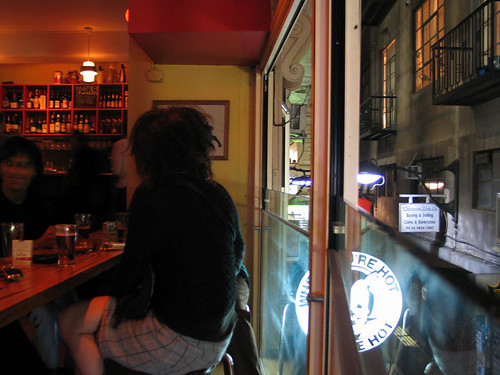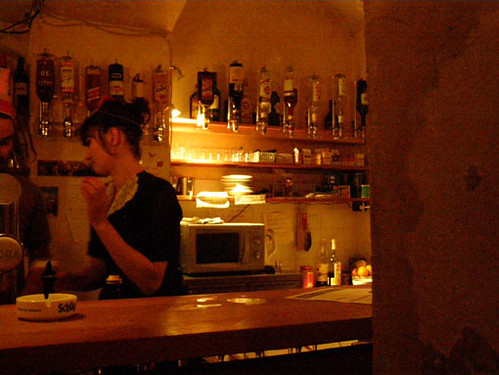as some of you regular readers will vaguely remember, i’ve been doing some research about public private and private public places. as part of some post-grad study. not just as something to do on the weekend.
anyway, last week i took my lanky midlander UK plannery friend to hell’s kitchen in melbourne, and as we were overlooking the hustle and bustle of centre place, i was reminded about some stuff i have been thinking about since i was in europe last year, relating to eating in public. and being alone.
i believe there’s quite an art to designing an eating space (as opposed to retail, or other public spaces). it’s a balance of logistics, cash flow (ie – 3 large tables gets x amount of business, where as 7 small tables and a bar gets y), ambience and dynamic. it’s a space that has to be infinitely personal and public – at the same time; it needs to take noise and smell into consideration; anywhere from a single, intensely private dining experience to an amazingly social banquet experience – and everything in between.
and i believe that the starting point for this is possibly the consideration of single-dining. i think if you have a restaurant/cafe/bar where someone feels comfortable enough on their own but amongst others, it’s not too far to becoming a place where they feel like bringing others.
in europe, i noticed that restaurants, cafes, etc are more designed with the single person (as well as the big group) in mind – tables or benches with your back to the wall but facing the rest of the place – closed enough to not feel so exposed, so vulnerable, but still open enough to be able to participate in the collective dining experience. and then extend that to the tradition of eating outside in public – especially in italy, in the piazza, as you walk around with cheese and tomato sugo dripping down your arms from the lunchtime pizza.
some of my favourite places are those which accommodate me as an individual, providing me with the privacy of my own eating experience, my own thoughts, food-based neuroses and choices, yet allow me to participate in the common action of eating, together, amongst my fellows.
whereas dining places that are only for the group, only for the couple – those with friends, large families and many colleagues, opens up a gap for people to feel that they must belong. and if they are on their own, they must be lacking. and lack is an anti-social condition (i wonder what lacan would think of that statement). well, certainly in western societies.
presumably the form of dining spaces have evolved out of the behaviour of dining, but what of those new spaces that are designed? those that need to be designed to accommodate cross-cultural, global and borrowed culinary habits in the cities of the future? where we are at one more singular and infinitely more populous than times past.


